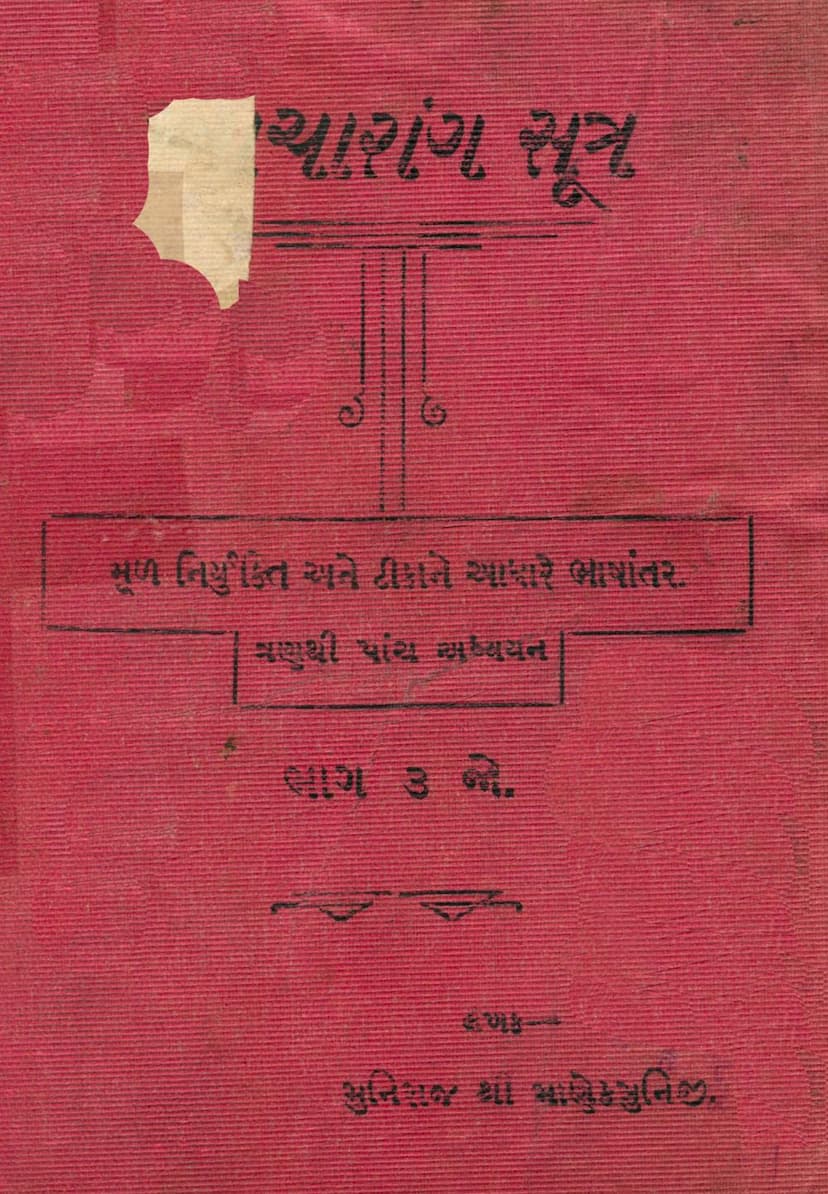Acharanga Sutra Part 03
Added to library: September 2, 2025

Summary
This document is the third part of the Acharanga Sutra, translated into Gujarati based on the Niryukti and commentary. It covers Chapters 3 through 5 of the Acharanga Sutra and was authored by Muni Manek. The publication was supported by the Shwetambar Jain community of Palanpur and published by Mohanlal Jain Shwetambar Gyan Bhandar in Surat.
The book provides a detailed explanation of various concepts within Jainism, including:
Chapter 3: Sheetal and Ushna (Cold and Heat)
- The nature of detachment: Discusses the importance of equanimity when facing pleasant and unpleasant experiences.
- The concept of Virati (restraint): Explains the significance of abstaining from harming living beings.
- Kashayas (passions): Details the nature of anger, pride, deceit, and greed and how to overcome them.
- The suffering of the cycle of birth and death: Highlights the miseries in all four states of existence, including those of celestial beings.
- The importance of renunciation: Emphasizes the need for monks to shed worldly attachments and control their senses.
- The path to liberation: Explains how overcoming passions leads to the destruction of karma and attainment of omniscience.
Chapter 4: Samyakva (Right Perception)
- The essence of Samyakva: Focuses on the correct understanding of reality and the path to liberation.
- The three types of Charitra (conduct): Discusses the importance of right conduct in achieving spiritual progress.
- The strength of the soul: Highlights the inherent power of the soul to overcome advers.
- The process of Nirjara (shedding of karma): Explains how austerity and right conduct lead to the purification of the soul.
Chapter 5: Lokasar (Essence of the World)
- The nature of the world: Describes the impermanent and suffering-filled nature of the world.
- The importance of solitude (Ekal Vihari): Discusses the merits and challenges of a solitary monk's life.
- The dangers of attachment: Warns against attachment to worldly possessions and relationships.
- The path to detachment: Emphasizes the need to overcome attachment to senses and passions.
- The essence of Jain philosophy: Highlights the importance of non-violence, truthfulness, and restraint in achieving spiritual liberation.
The book also includes a "Shuddhipatra" (errata) and acknowledges the financial support received from various individuals and the Jain community. It aims to spread the teachings of Jainism and encourage further study of its scriptures.